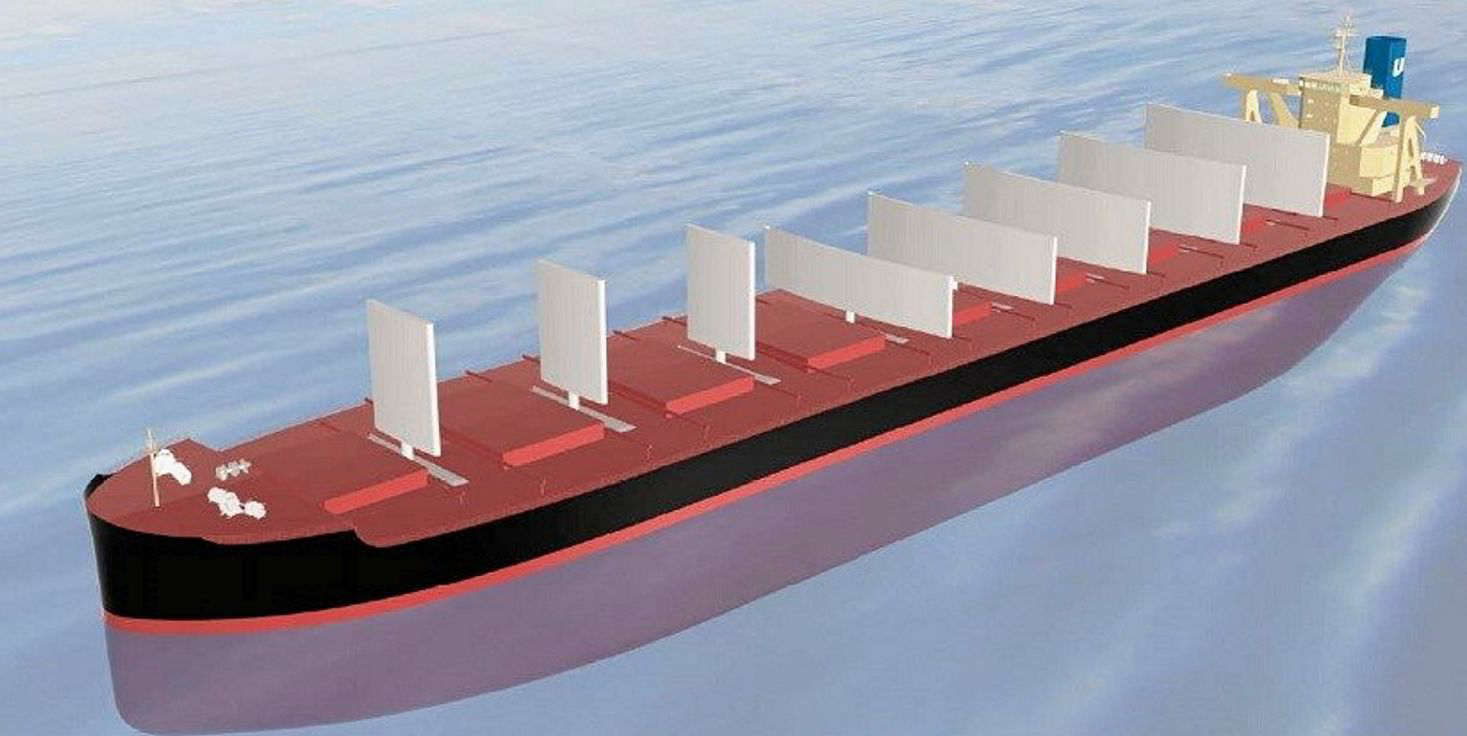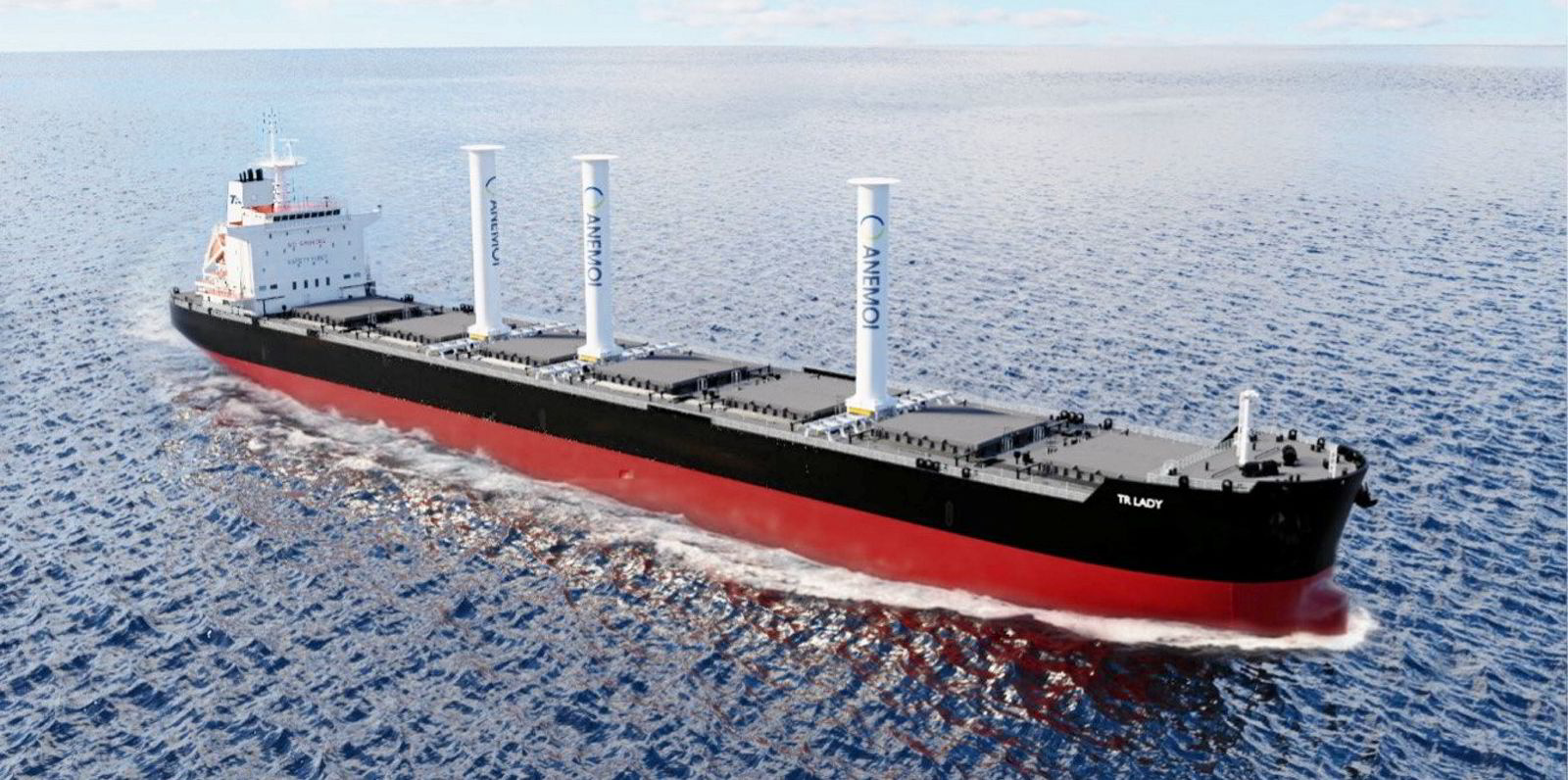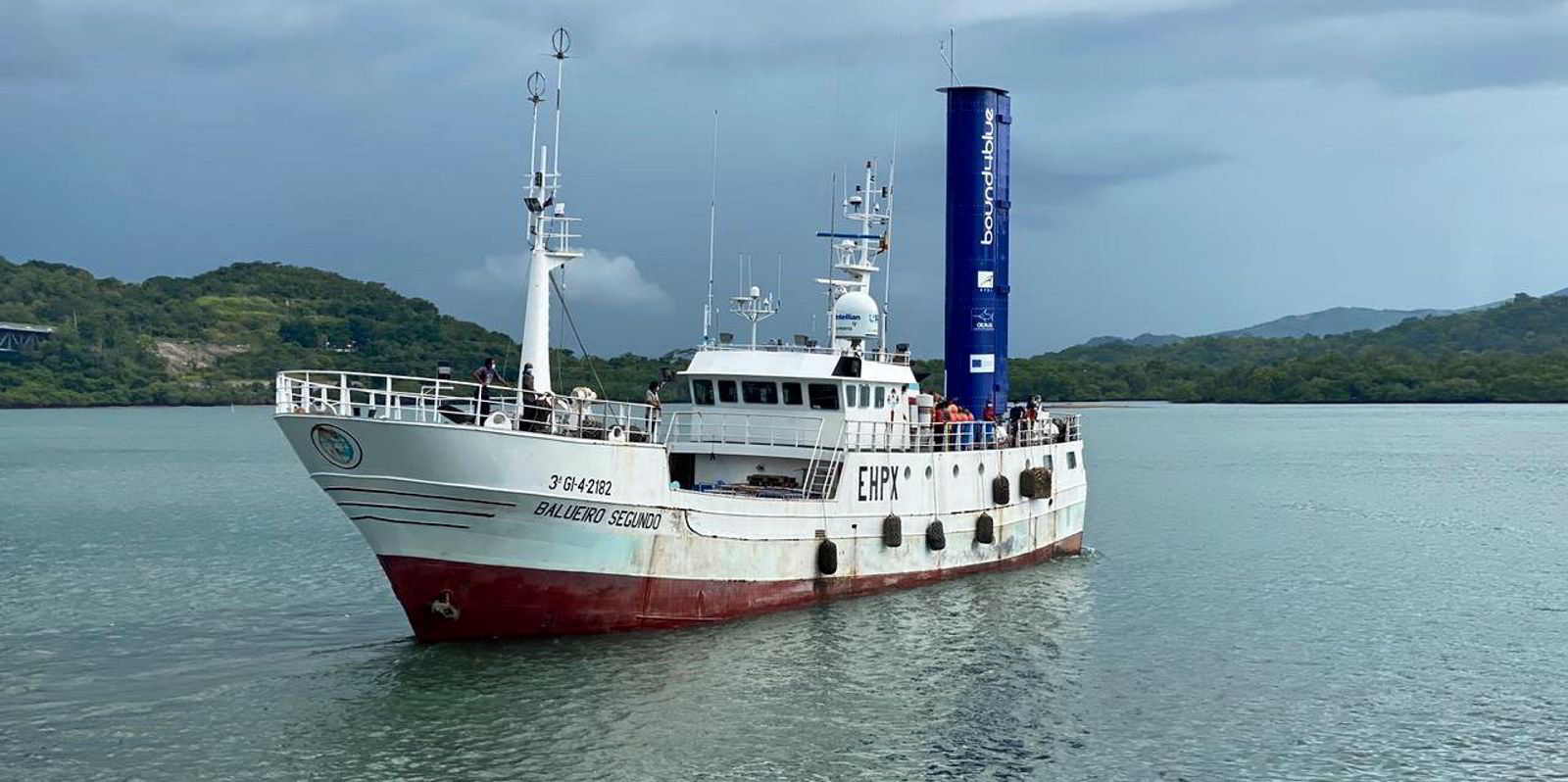Namura Shipbuilding and ship operator NS United Kaiun Kaisha have teamed up to develop a wind-powered system for a capesize bulker.
The system will have extending sails located under decks between the holds on a 183,000-dwt bulker. They will be deployed whenever wind conditions can aid propulsion and cut fuel use.
Namura has applied for a patent on the system, which will have wider but lower sails close to the bridge, to maintain vision, while they are narrower and higher towards the bow to prevent sightlines being obstructed.
The sails can be rotated to take better advantage of wind direction and gain maximum propulsion effect.
When conditions are not favourable or when the ship is conducting cargo operations, the sails are retracted and stored below deck.
Namura believes wind power will become an indispensable fuel-efficiency technology in the future. The capesize installation is an initial project, but no further details were given.
To reduce greenhouse gas (GHG) emissions at Japanese shipyards, the government has set a target of a 46% cut by 2030, which Namura said will require development of fuel-efficient technologies.
The reductions go alongside the International Maritime Organization’s decarbonisation targets, which aim to chop carbon emissions by 40% by 2030 from 2008 levels and at least 50% of the industry’s total GHG emissions by 2050.






